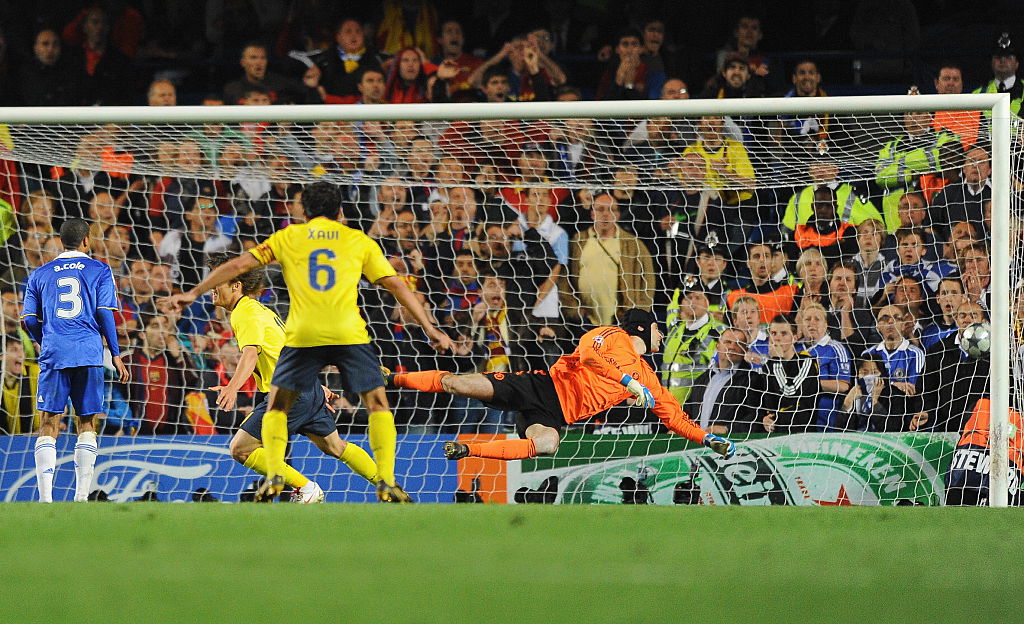The Curlett Cup: Liverpool's greatest trophy you've never heard of
In 1963-64, Bill Shankly's champions were denied trophy celebrations at Anfield, until two local brothers saved the day

The feature first appeared in the June 2020 issue of FourFourTwo. Subscribe now and get 5 issues for £5
‘“When the Kop is roaring, it really is like having a 12th man there on the pitch.” Today’s cliché was yesterday’s term of endearment for Bill Shankly, whose link to Liverpool and its fans felt almost preordained.
The ninth of 10 kids born into a working-class mining family in the poverty-stricken Scottish village of Glenbuck, ‘Wullie’ – as he was known affectionately at home – toiled down the coal pits himself before signing professional terms at Carlisle United in 1932.
Liverpudlians were Shankly’s kind of people: dockers and factory workers; folk with a strong sense of community and enough humour to pull them through the darkest times. Crucially, they also adored football. He formed an immediate bond with Reds fans that laid the foundation for 15 remarkable years and beyond at Anfield, long into the reigns of his grateful successors.
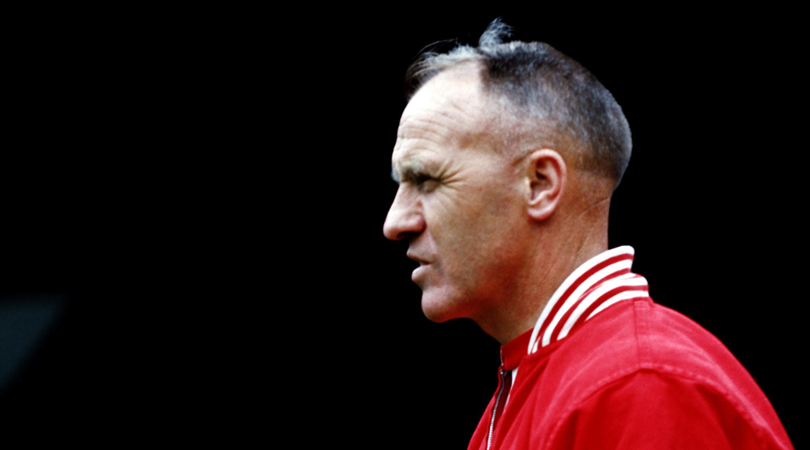
It was this bond, too, that would eventually lead to Liverpool lifting one of the least-known, yet most cherished cups in the club’s history – not once, but twice. A trophy which would later come to be known as the Curlett Cup.
“In my opinion, it’s as valuable and important to Liverpool FC as any other trophy we have in our collection,” Stephen Done, senior specialist and curator at the Reds’ museum, explains to FourFourTwo. “We have league titles on show here and European winners’ medals – even the real Champions League trophy from Istanbul in 2005, which isn’t a replica but the genuine article. However, for me, the Curlett Cup stands equal among them.”
If you’ve never heard of it, you’re not alone: the majority of Liverpool fans aren’t aware of it either. But it means something, and for four decades it looked like Merseysiders may never see it again.
Get FourFourTwo Newsletter
The best features, fun and footballing quizzes, straight to your inbox every week.
ANTHROPOLOGY ON THE KOP
In 1963-64, Liverpool – a Second Division side when Shankly had taken over five years earlier – were on course to clinch their first top-flight crown for 17 years. A victory in the final home game of the season against Arsenal would be enough to seal the title ahead of Manchester United and Everton, setting the stage for some almighty celebrations at Anfield.
An extraordinary BBC Panorama documentary of that April day probed the distinctive nature of the Reds’ Kop, 28,000-strong and swaying in motion while singing ditties like She Loves You: The Beatles’ hit single of 1963.
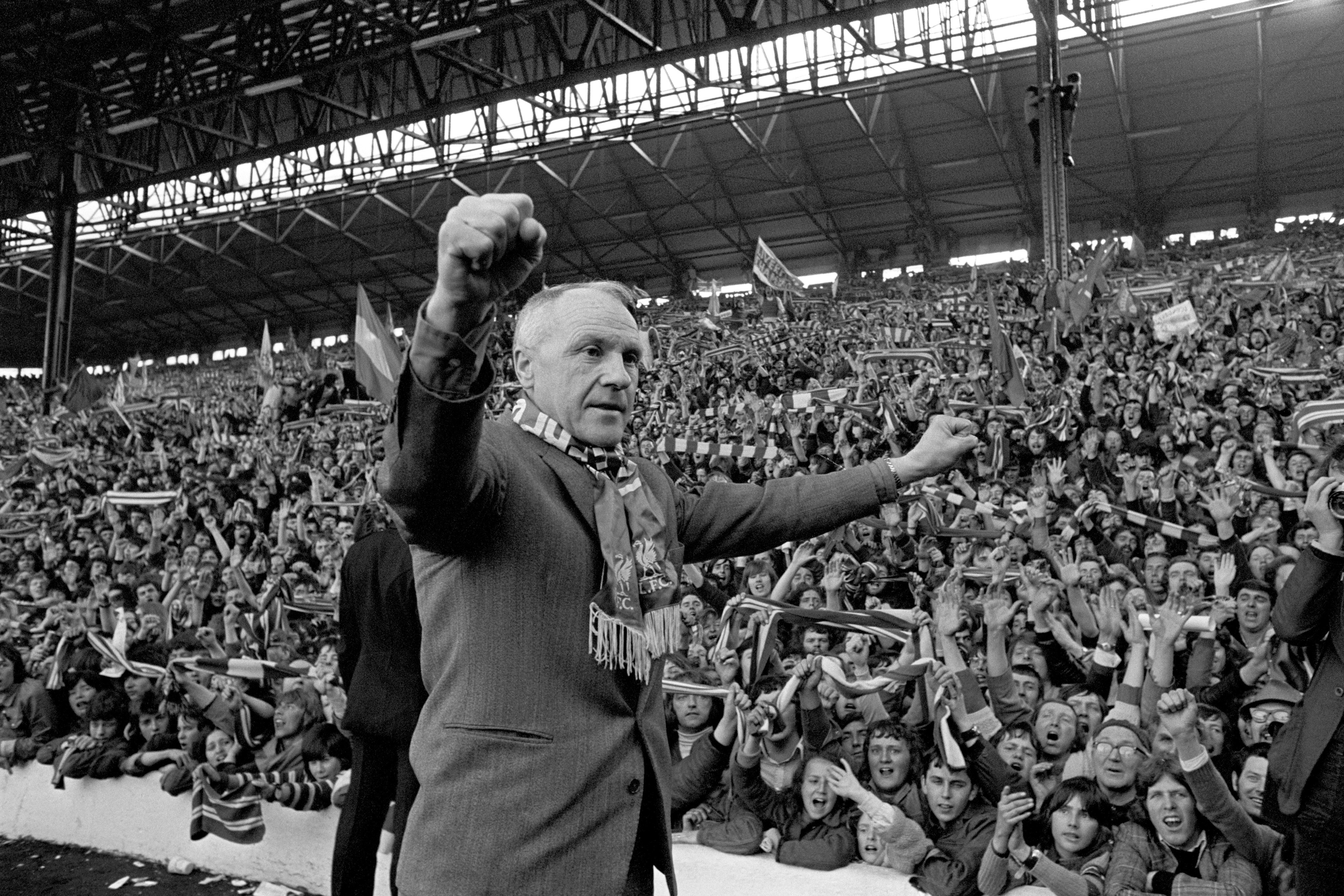
“I have never seen anything like this Liverpool crowd,” hummed presenter John Morgan. “An anthropologist studying it would be introduced to as rich and mystifying a glimpse into popular culture than any South Seas island.”
But there was a small problem. Unlike now, the trophy wasn’t brought to a stadium for the champions’ ceremony unless they had already won the league before kick-off. Liverpool would lift the trophy, therefore, at Birmingham City four days later, providing they successfully saw off the Gunners.
For two local brothers in their early twenties, this just wouldn’t do. So, they hatched a plan. “My dad, Terry, and uncle Teddy knew a win over Arsenal would give us the title at Anfield, but that there wouldn’t be a trophy to parade,” Franny Curlett, Terry’s youngest son, says with a broad smile as he begins to tell his family’s priceless story.
“They couldn’t have that, so got together and made a trophy using an old vase of my nan’s. First they painted it red and white, then cut out photographs of the players from a newspaper and stuck them on.”
The old vase looked the part, except for one important element.
“It didn’t have a lid,” laughs Franny. “All cups had a lid at the time, so they decided to make one out of the wooden cap that goes on top of a bannister. It fitted perfectly.”
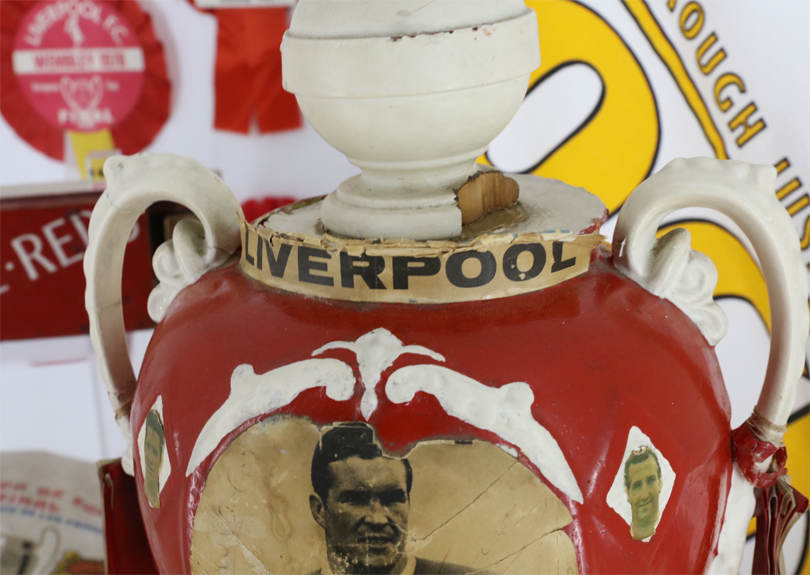
Making a trophy was one thing, but making it useful was another entirely. The Curletts wrote a letter to Liverpool offering the club their cup should they need it – and were astonished to receive a personal reply from Shankly himself.
“Shankly invited them along to the Arsenal game as guests and told them to bring the cup with them,” Franny – a childhood friend of Robbie Fowler – continues. “Liverpool won 5-0, so the trophy was given to the players straight after the final whistle. They danced with it on the pitch, showing it off to fans like the real thing, and then took both dad and Teddy into the dressing room with all their heroes. They were football mad, the pair of them, so it really was a dream come true.”
In pictures from that afternoon, Ron Yeats – a man of such terrifying stature that Shankly urged journalists to walk around him during his unveiling, in order to get a better idea of his size – can be seen prancing down the touchline in front of an elated Kop. In his hand is an old vase painted by two local lads who, pitchside, couldn’t believe what was happening.
“No one felt ridiculous as they held it,” says Stephen Done at the Liverpool museum, “and no one felt embarrassed. Many managers may have told their players not to take things from the crowd, but Shankly had it all planned from the start – he understood what football meant to the people of Liverpool.
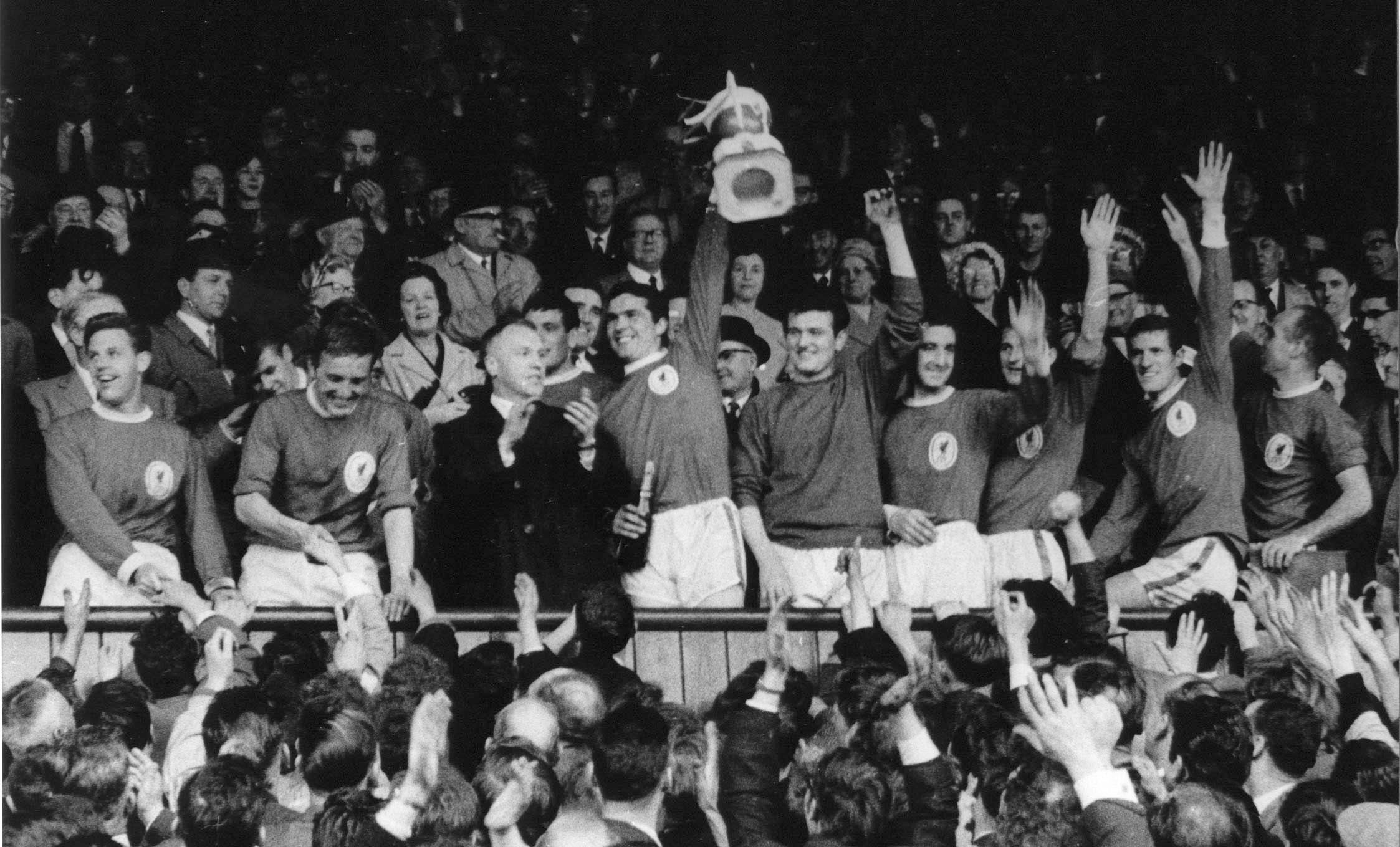
“Shankly got the spirit of Liverpudlians better than anyone. He answered every single letter he was sent, from his own typewriter. He wasn’t a good typist, either; he was famously slow. His responses never sounded very official; they were personal, and sometimes included little pictures or comments to show he’d read the letter thoroughly. He felt he owed the fans a genuine response if they’d taken the time to write to him.”
The Curlett Cup was such a crowd-pleaser, it was brought back out for Liverpool’s 1965-66 title triumph after they secured top spot with one match to spare. The brothers had offered their mum’s vase to the club for a second time, and were once again guests of honour for the 2-1 win at home to Chelsea.
But that was the last time the trophy would be seen for more than 40 years.
“It vanished off the face of the earth,” explains Done, who dreamed of tracking it down after being hired by the museum in 1997, more than three decades later. “Soon after taking the job, I put together a list of all the things I’d love to find and put in the museum. That cup was top of the list, but no one had a clue where it went after those celebrations.”
The big problem was that its creators’ names were never noted. “It was just assumed that it had been lost, broken or taken down the pub somewhere,” Done continues. “It could have been at the bottom of a skip for the last 30 years as far as we knew. This was before the internet, so there was no way of finding out where it went. I pretty much had to give up.”
As it later transpired, Terry Curlett had hung around until the conclusion of the celebrations and taken his prized piece of memorabilia back home with him. It was now a cherished family heirloom, and he hated the thought of it being lost or broken. He carefully wrapped it up and stashed it in the attic, daring to bring it out for special occasions only.
“We’d have family round and my dad would say, ‘Come on, let’s get the cup out and have some pictures with it!’,” says Franny, who was born in 1975, nine years after the second title jamboree against Chelsea.
Even by that time, those jubilant events had faded from memory for most Reds supporters, and Franny had no idea quite how sought-after his grandmother’s vase would become.
Terry Curlett passed away following a heart attack in 1995, aged just 56. Tragically, Franny’s older brother Christopher had died two years earlier, committing suicide. Franny has a tattoo on his arm in tribute to both.
“I was close to the pair of them,” he recalls. “My brother and I used to listen to his stories about those times. Dad was always down the pub with his mates, telling jokes and having a laugh. He was a massive Liverpool fan, and a lovely man all round.”
In the summer of 2006, Franny decided to do something with his dad’s cup.
“I sat down with my mum, who’s still with us now, and said, ‘Look, we can’t keep this thing up in the attic forever’,” he says. “Not when so many people might love to see it. She agreed, and I phoned the museum the next day.”
It was a call curator Done will never forget.
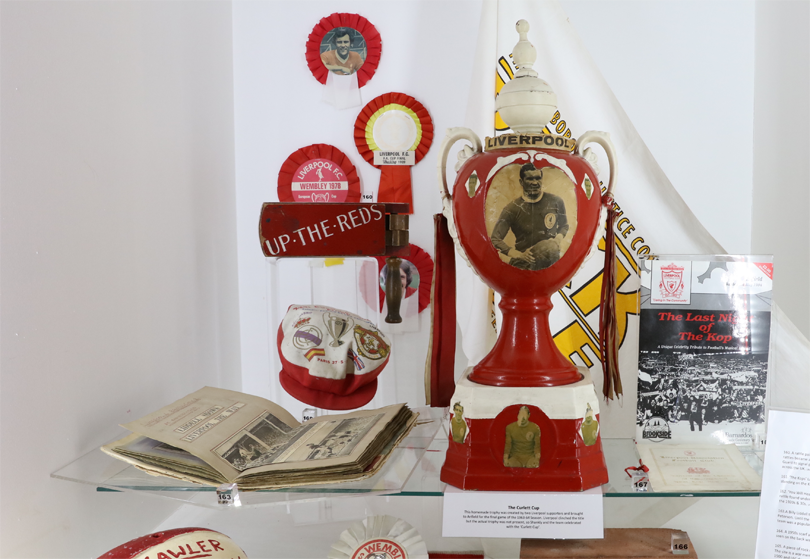
“A colleague of mine said there was a chap on the line who owned something I might be interested in,” he remembers. “When she put him through, I soon knew what he was talking about. I was utterly gobsmacked. ‘It couldn’t be it’, I thought. I didn’t believe it.”
“I thought the line had gone dead,” laughs Franny. “I said, ‘Hello, are you still there?’ and Stephen said, ‘I’m still here, Franny. I just can’t believe what I’m hearing’. I popped down with the vase that afternoon. Stephen and the rest of his staff were all gathered to see if it really was the one they’d seen in those old pictures.” It was, of course. Understandably, Done lists that day the Curlett Cup fell into his lap as one of the best he’s had at the museum.
“It’s been out on display ever since,” he says proudly. “And as far as I’m aware – and as long as Franny’s fine with it being here – it’ll never go off display. The red and white paint is a bit faded, several of the players signed it and the ink is slowly disappearing, but it’s perfect. I’m so happy we have it here.”
KLOPP THE KINDRED SPIRIT
Fast-forward to 2020, and Liverpool are once again the best team in England. Once again, however, they face a party-pooping finale to their first title win for 30 years.
Jurgen Klopp’s side have been so dominant this campaign that it’s taken a global health emergency to halt their procession, although it hasn’t been through lack of effort elsewhere.
In February, 10-year-old Manchester United fan Daragh Curley wrote to Klopp wondering if the Reds could start losing a few games and give everyone else a chance. Like the Curlett brothers, Curley was shocked to get a personal response – only his query was politely rejected.
Klopp received a letter from this 10-year-old Manchester United fan asking them to stop winning games.This is class. My manager 👏🔴 #LFC pic.twitter.com/xIwu4uJ11eFebruary 21, 2020
“Unfortunately, I cannot grant your request,” explained Klopp. “As much as you want Liverpool to lose, it is my job to help them win. There are millions of people around the world who want that to happen, and I really do not want to let them down.”
Had Terry Curlett been alive today, would he have been a fan of Klopp – another charismatic Liverpool boss with a love of the locals?
“Oh yes, he would have adored him,” insists Franny. “How could you not warm to him? He has the same qualities and values as Shankly. He loves the supporters and knows how much they mean to this club. Klopp is right up there with that great man in terms of character. My dad would have been proud of what the team have achieved this season.”
Should Liverpool’s title celebrations be culled, could we even see the Curlett Cup dusted off for one last coronation?
“Let’s hope it never comes to that, although it would be wonderful,” says Franny. “Can you imagine? How bizarre that would be to see my dad’s trophy given another run-out. He would have loved that.”
This is the story of a club who embraced an old vase, part of a staircase and a collection of newspaper cuttings, then transformed it into the stuff of legend. In that regard, Liverpool walk alone.
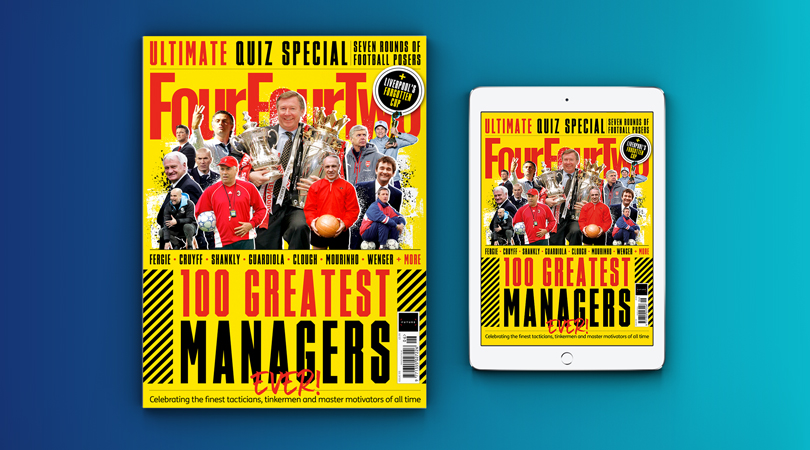
Read more exciting content in the June 2020 issue of FourFourTwo magazine, available in shops and online from Wednesday April 29. Our new magazine looks at the 100 greatest managers in the history of football, exploring the tacticians and tinkermen who have influenced the game more than anyone else, investigates the fall of Barcelona's famed La Masia academy and presents eight pages of quiz questions and football posers to keep you busy during lockdown. We also chat to Bobby Zamora, Shaun Wright-Phillips, Kemar Roofe, Robbie Fowler and more.
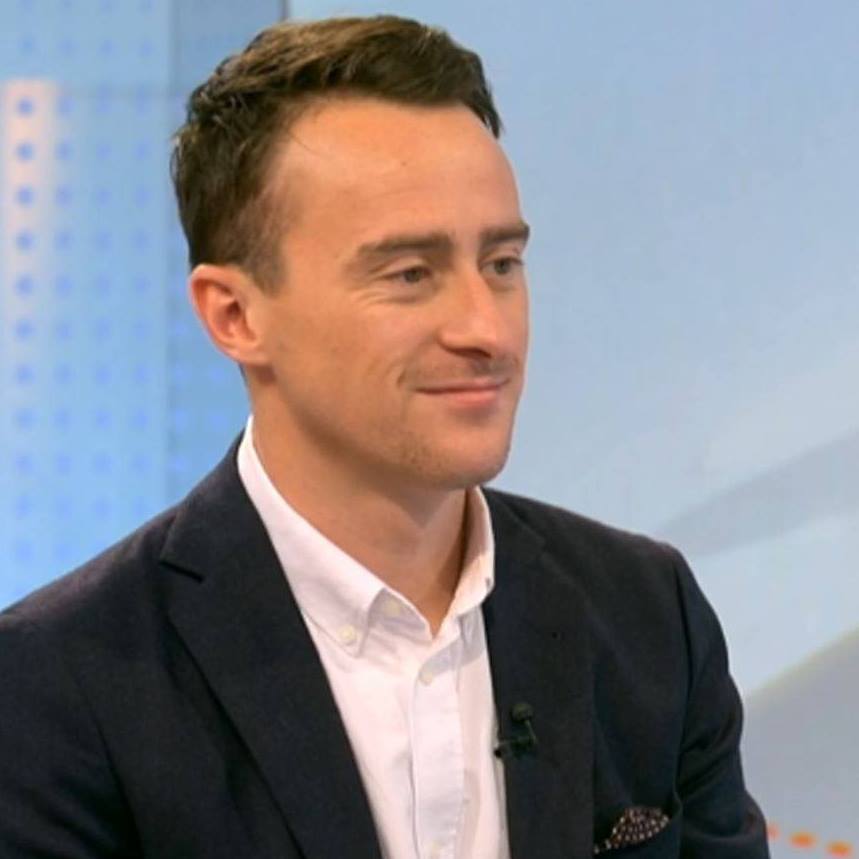
Ed is a staff writer at FourFourTwo, working across the magazine and website. A German speaker, he’s been working as a football reporter in Berlin since 2015, predominantly covering the Bundesliga and Germany's national team. Favourite FFT features include an exclusive interview with Jude Bellingham following the youngster’s move to Borussia Dortmund in 2020, a history of the Berlin Derby since the fall of the Wall and a celebration of Kevin Keegan’s playing career.
